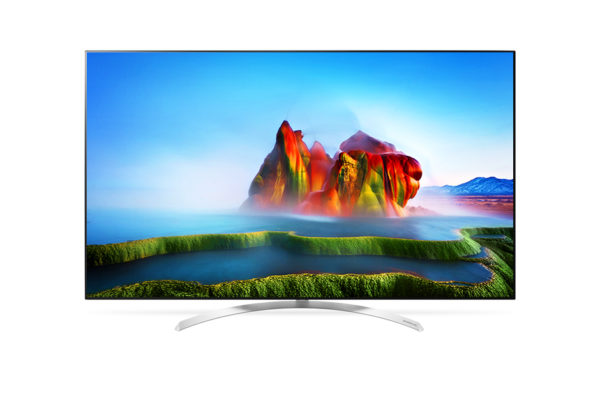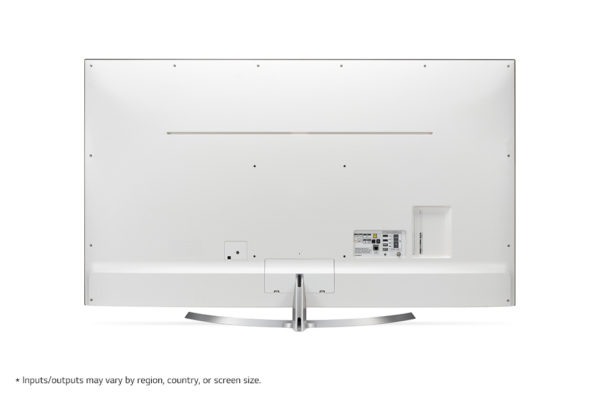
Not everyone can afford a stunning-looking OLED (organic light emitting diode) TV, but if you go for a more affordable LED TV, you can still find great image quality by picking the best from the rest.
That’s essentially LG’s pitch for its latest range of Super UHD TVs, which it is positioning just below its top-range OLED TVs.
The new high-end LED TVs promise better colour accuracy, more contrast and generally improved image quality over other regular LED TVs. The secret sauce is in something that LG calls Nano Cell.
Essentially, this is using nano-sized particles to produce accurate colours on a screen. They are able to reduce light interference by leaving out colours that don’t belong, so green is green, and blue is blue.
The idea isn’t new but the approach is updated. The idea of using tiny particles to improve colours on an LED TV is commonly known as Quantum dot, and it’s also used in other TVs such as Samsung’s QLED (Quantum dot LED, which has nothing to do with OLED and is not as good as OLED).
What LG has done is not just use the small particles in the various layers that make up a screen, but also use similar-sized ones, unlike the irregularly-sized ones used previously. This means good image quality even if you are sitting off-centre, as many people do in a living room, LG says.

Can all this technology be seen in everyday use? I recently tested out the 55-inch version of LG’s SJ850T, which is part of the new LED TV range, and I’d say you can get impressive results.
I didn’t manage to compare the LG Nano Cell technology with Samsung’s QLED side by side. However, I did compare with my two-year-old Samsung JS8000, which featured an earlier version of Quantum dot, and the newer LG version is clearly miles ahead in terms of the natural colour and accuracy.
I walked to the side to check on LG’s claims of off-centre performance, and it didn’t disappoint, either. The image was still clear and the colour had not faded.
Okay, you won’t get the complete picture if you are sitting way to the side, but if you are on a regular sofa in front of the TV, you should have no problems, even if you are at the side.
One thing that gets me a lot about my old Samsung TV is the light bleeding from the edge of the screen. Though common on many TVs with edge-lighting, the problem has become particularly obvious on my TV recently, for some reason.
So, when I fired up the SJ850T I had for review, the difference was immediately clear. Its advanced local dimming did away with this annoying problem, because the light source wasn’t from the edge of the screen.
Does it do away with another annoying LED problem – clouding? This is when you see bits of cloud-like grey patches in a pitch-black scene, especially if you turn off the lights.
The SJ850T, again, does a decent job of reducing this problem. However, there is no magic in LED TVs that can remove this issue altogether, so make sure to check this out at a showroom.
In terms of motion and contrast, I like the SJ850T as well. I didn’t detect the annoying stutter that you sometimes get on a tracking shot in a movie and though there is a hint of motion blur at times, you have to really watch out for it in an action scene.
What you don’t want is the opposite – the so-called Soap Opera effect. Here, you get zero motion blur and everything moves in the frame like people in a cheap soap opera that is somehow always in focus.
What about contrast? I like it that the SJ850T can show its range in scenes where there are both dark and light portions. As LED TVs go, the new LG TV is competitive in this area.
Still, it’s hard to avoid bringing up LG’s OLED TVs, which are the standard by which all TVs are judged today. If you’ve seen an OLED TV, you’ll find fault with all others – you’ll want the deep blacks and high contrast that are hard to replicate on an LED screen.
The SJ850T does an honest job in this aspect, but it is clearly not in the same league as a more expensive OLED TV. Firing up Christopher Nolan’s Interstellar movie, for example, you should instantly detect how deep the blacks are on a TV.
Like in the movie, space is meant to be nothingness, not a shade of grey. The SJ850T does well enough here, with a dark grey that is close to black. But I’d like it to be “blacker” because I’ve seen that on an OLED TV. I know, tough for an LED TV these days.
One area that the LG SJ850T does well in is sound. Surprisingly, the 40-watt speakers plus a 20-watt woofer do a more-than-decent job of boosting sound through the skinny frame of the TV. Explosions actually have some heft, without the shattering headache effect of lesser sound boxes.
One thing I feel is important to point out is the operating system. With connected TVs, it’s crucial that you get to your content easily, and LG’s WebOS is as good as it gets.
The large icons are friendly to navigate and the magic-wand remote controller is a familiar friend to have around, even if you are new to smart TVs.
The latest version even includes a button for Netflix and one for Amazon Prime, so you can quickly get started on your weekend binge. The only gripe I have is that the remote is still made of plastic, and it isn’t much different from the cheaper ones used in lower-end LG models.
Summing up, perhaps the best way to describe the SJ850T is that it’s a souped-up LED TV that gives as good an image as the technology allows today.
If you are looking at the 55-inch version, be prepared to pay about S$2,400 on Lazada, which is just about close enough to the cheapest 4K OLED TV costing about S$3,300. You might be tempted to stretch your budget a little if you can.
However, the price difference is wider for the bigger screens. Go up to 65 inches and you need close to S$6,000 for a 4K OLED TV. At this size, the SJ850T can be had for under S$4,000.
So, the SJ850T will appeal to those who want a larger screen while enjoying great image quality. It is an attractive option for those who don’t want or can’t meet the still-expensive asking price of OLED TVs.





